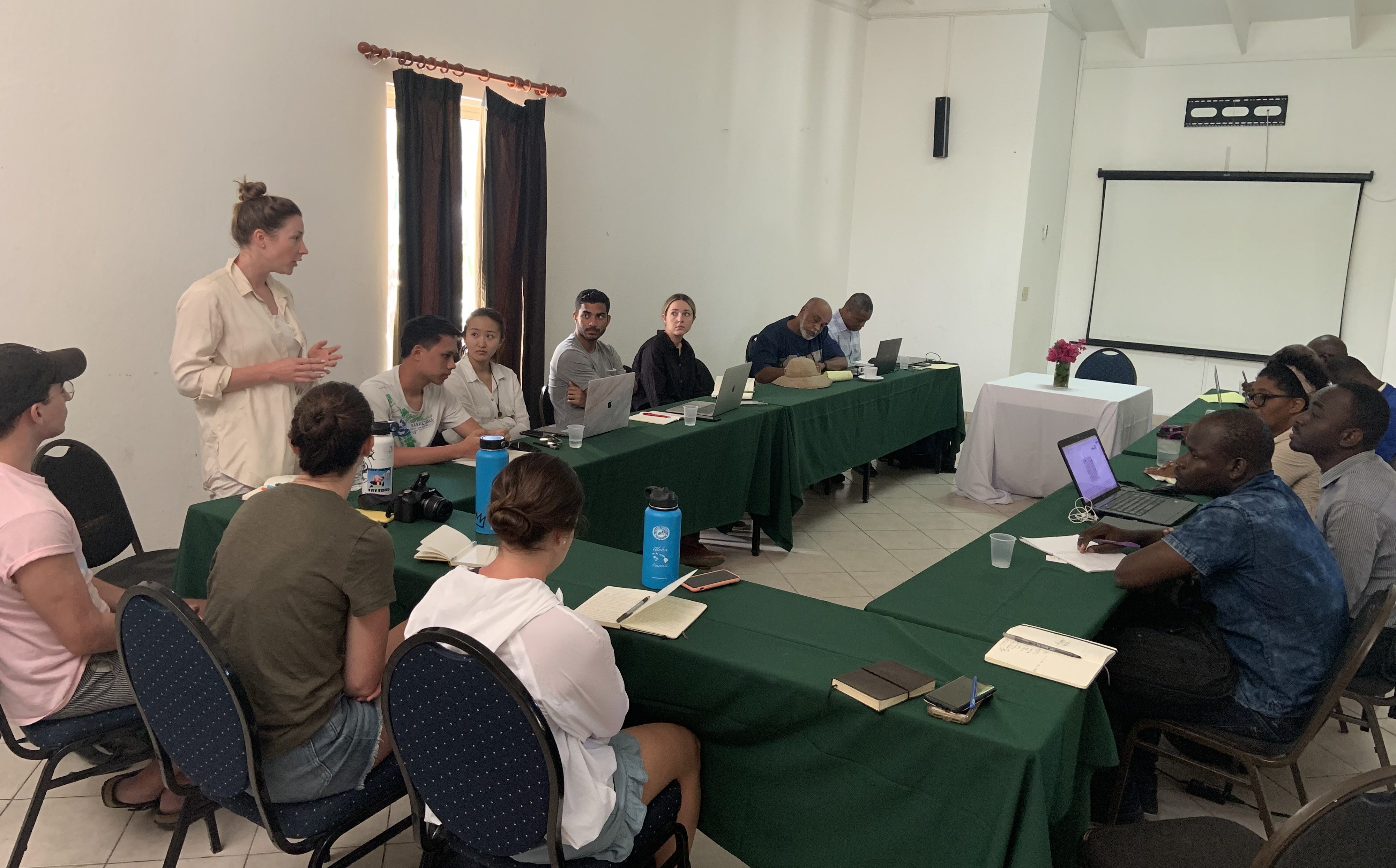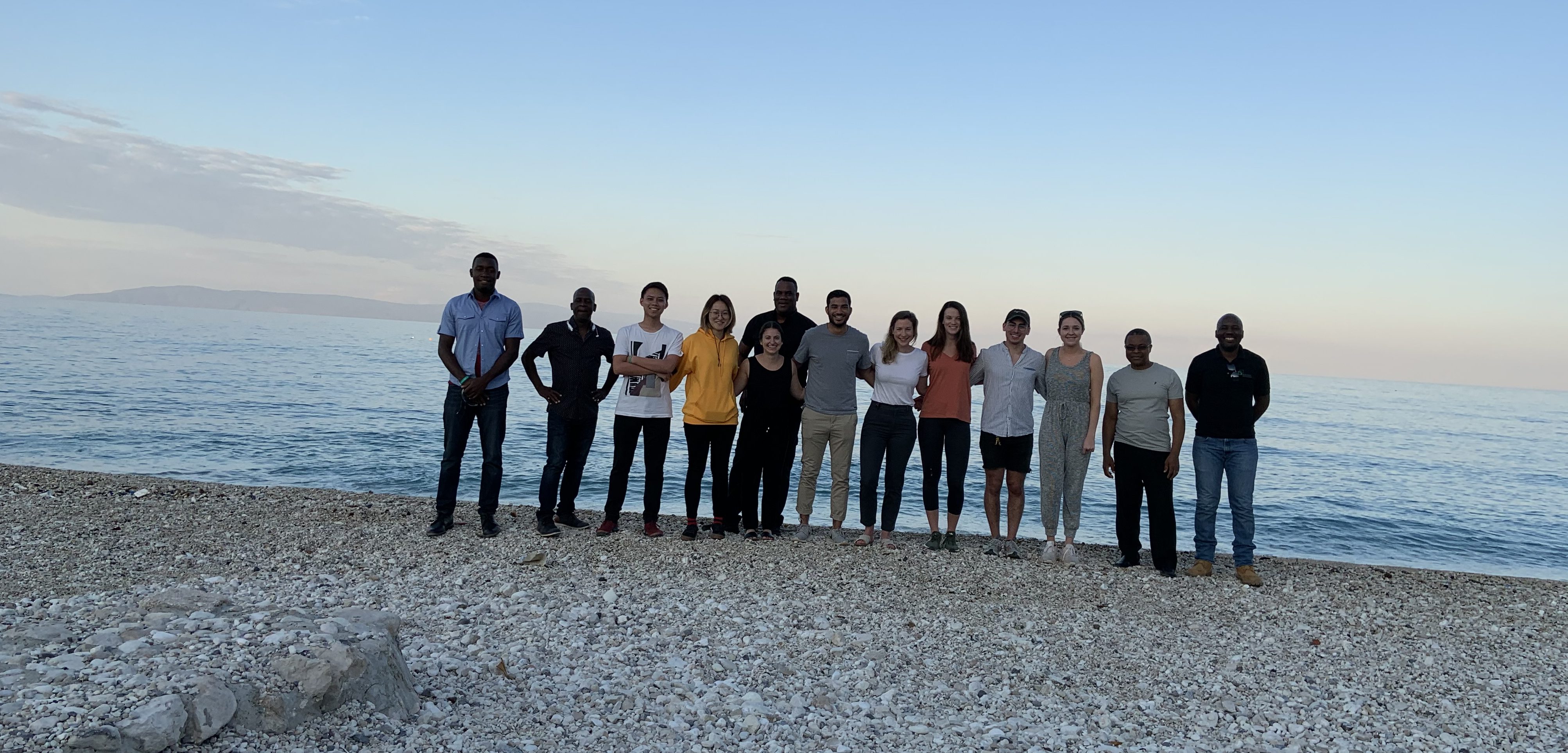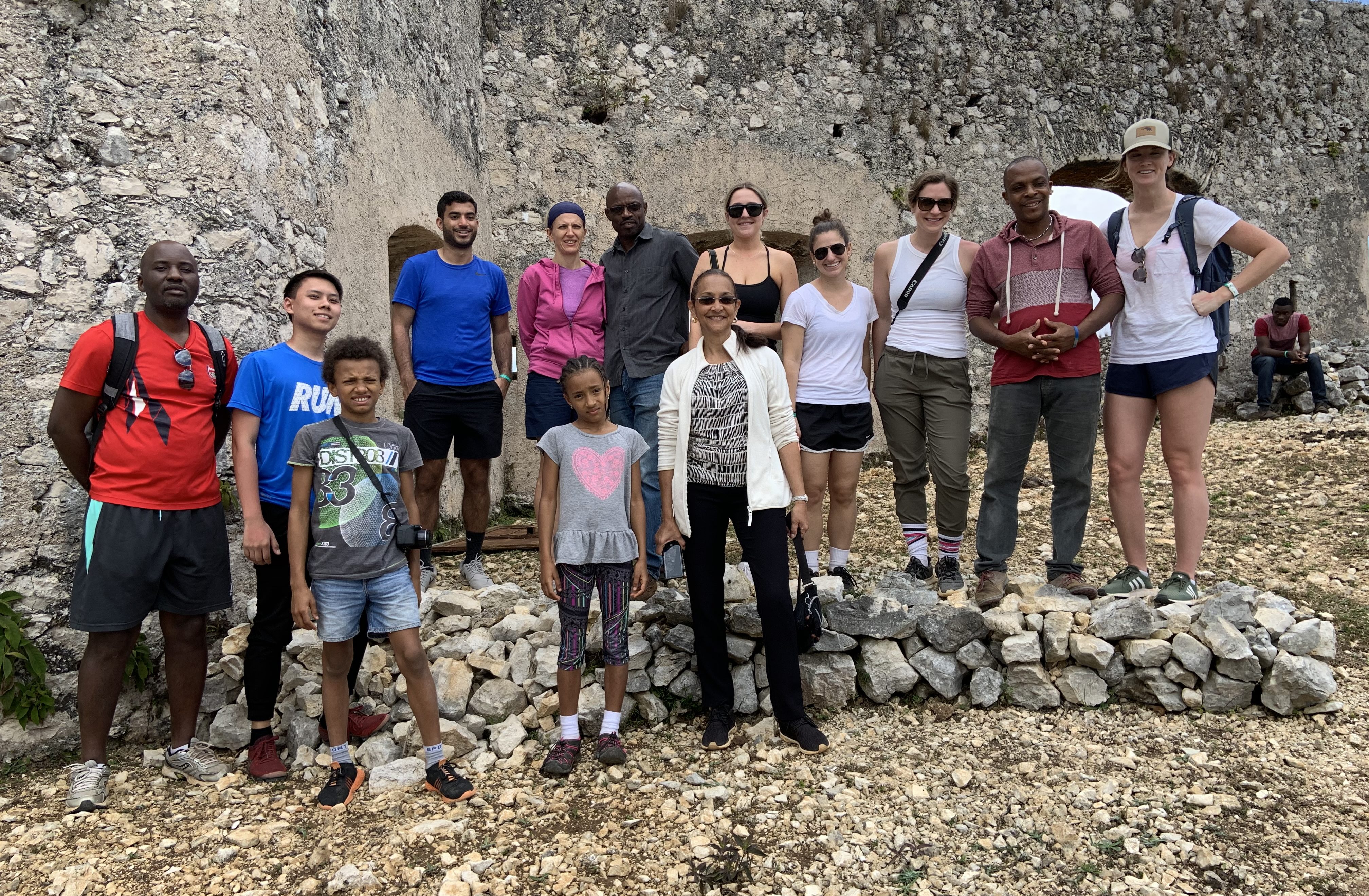A group of graduate students in Northeastern’s School of Architecture recently had the opportunity to study resilient infrastructure in one of Haiti’s most historic communities, Arcahaie. The trip was part of a two-semester site-focused design studio led by Killion Mokwete, Lecturer and RIBA Chartered Architect, that challenges Master of Architecture students to engage in a collaborative research and design process – with the developing nation of Haiti as a backdrop. The goal of the studio is to meaningfully and effectively involve the community, organizational representatives, and researchers in the design and decision-making processes, with the first semester focusing on an engagement strategy and the second semester building off this to focus on on-the-ground community engagement and site documentations (in Haiti).
The Arcahaie region, with a population around 100,000, was an appropriate backdrop for the studio, rich in agriculture, fisheries, and other urban development opportunities – and yet still far under-developed.

“Because of my current work in Arcahaie on a University Masterplan of the Sustainable Village Learning Community (SVLC), the studio takes advantage of the local relationships and understanding of the context to build research base,” explained Killion Mokwete. “Arcahaie also has a good record of partnering with universities after a successful partnership with University of Miami during the Community visioning process completed in 2014.”
Haiti is just one example of the all-too-common under-developed countries with communities that often lack empowering tools to determine the future direction of their neighborhoods, such as research analysis of their current socioeconomic conditions, as well as design intervention and future urban growth strategies. As a way to acknowledge and to begin to address this problem, this research design studio considers community engagement and participatory action research (PAR) as critical components of a holistic approach to local community development and the design intervention process.

The studio is a true hands-on, real-world learning experience. Students partner with a local advocacy group in Arcahaie, the Haiti Development Institute (HDI), as its local host and community engagement partner – and while on-site, they performed intensive research.
Seeing the passion the people of Arcahaie have for their community and country inspired my work, and proved the value and impact the work we have done could have in Haiti…
“The entire experience was so valuable for a couple of reasons,” said Catherine Buckley, who is a Master of Architecture student at Northeastern. “First, seeing the landscape that I have been studying and visualizing purely from maps and photographs was incredible. Second, interacting with the community members that I am designing my project around validated the drivers behind my work, and opened the door for new connections and information.”
“The research in Haiti was beneficial for studio work and also memorable for me. Though we have been researching Arcahaie for a semester and preparing the visit, the real condition was still beyond our expectations,” added Qianlin (Lin) Xu, Master of Architecture student. “For me, the most inspiring thing is people’s passion and sense of attachment towards their hometown. We have seen how the community and local talent dedicated themself to build up Arcahaie plus empowered the people. One example is the fisherman community leader that we talked to – Steley, who achieved a bachelor’s degree in journalism then devoted himself to community work for the fishing industry. During the interview, I was very impressed by their knowledge, which gave me very effective input for my thesis.”
The culmination of the trip was a community design collaboration with the local community and other stakeholders through a design charrette.

“My biggest takeaway from this trip was learning and embracing the way communities in Arcahaie live their everyday lives,” continued Catherine. “Seeing the resiliency communities have formed to conquer the toughest conditions was something that research alone could not show. Being able to experience Arcahaie first hand, and interact with members of the communities will be extremely influential to our final projects.”
This collaborative trip and studio will produce not only an academic-based knowledge, but will also have a lasting impact on Arcahaie; the community-tested strategies can help improve Haiti’s local community development and decision-making processes toward local economic sustainable neighborhoods.

“The opportunity to work directly with the community was an invaluable experience.”


